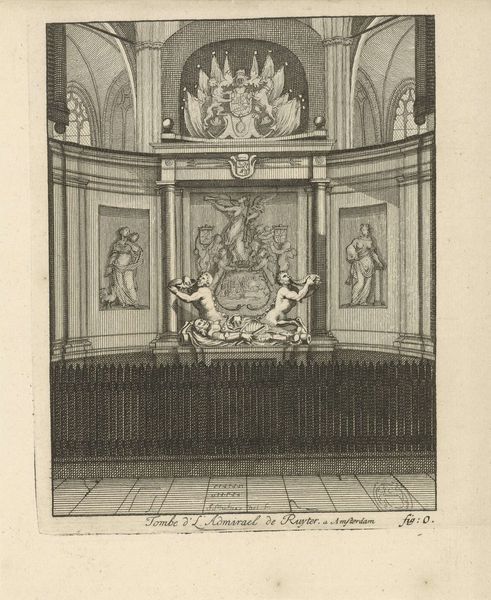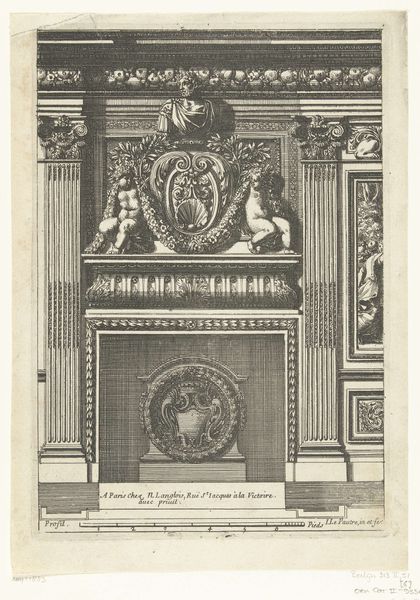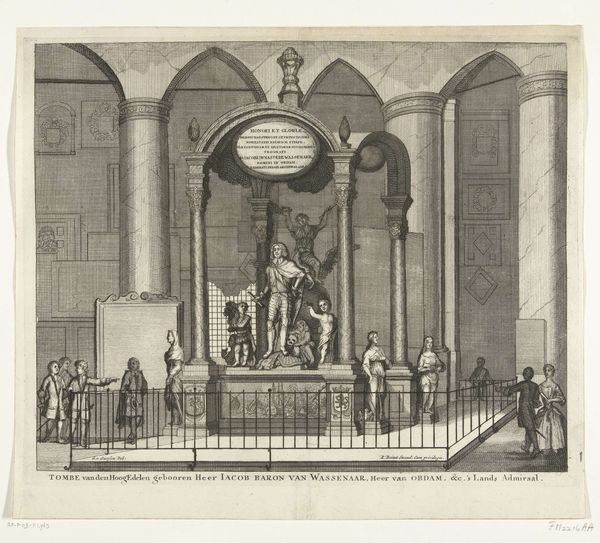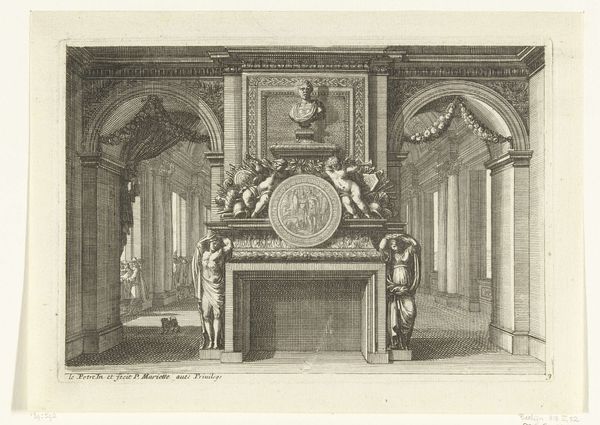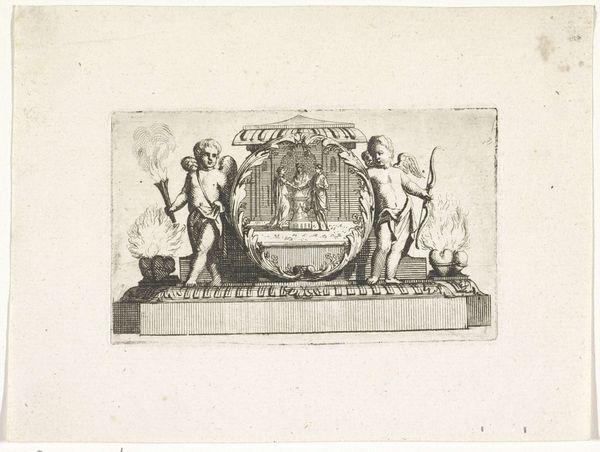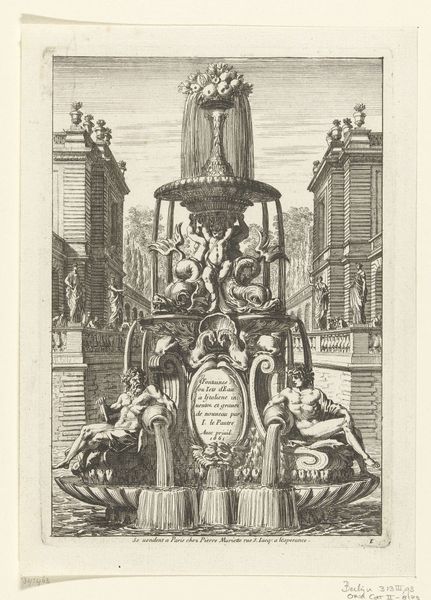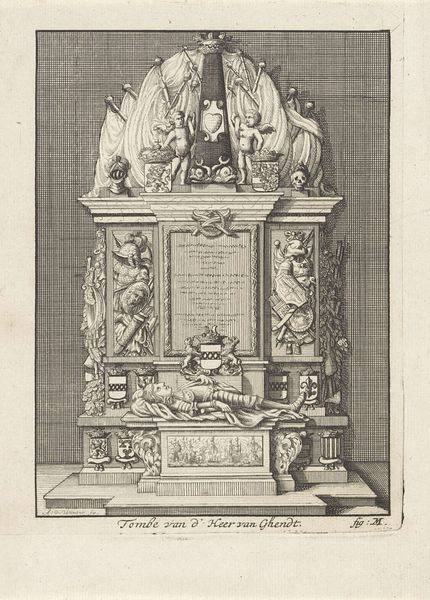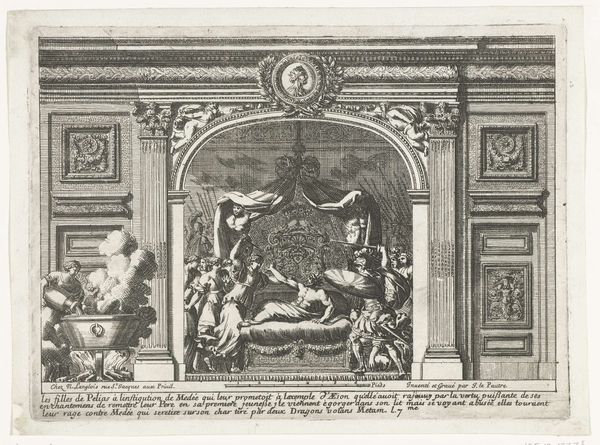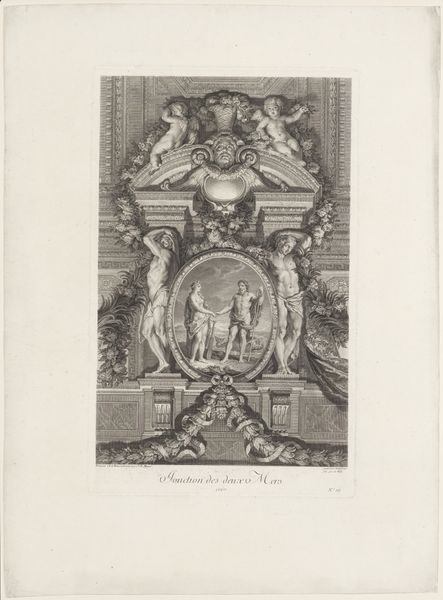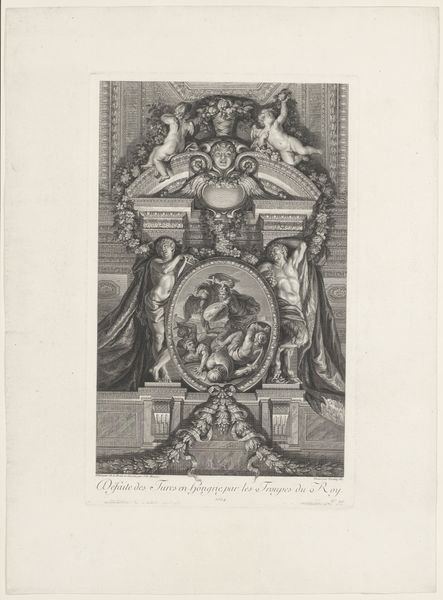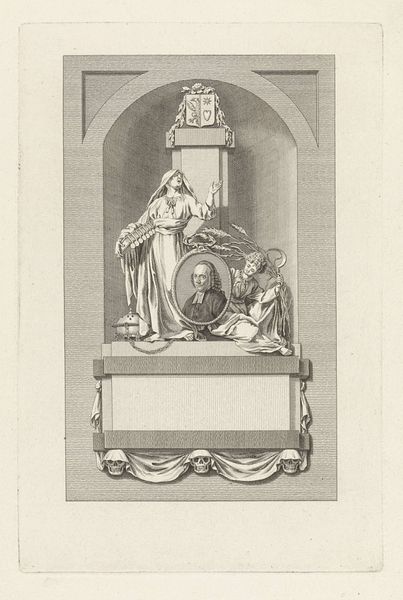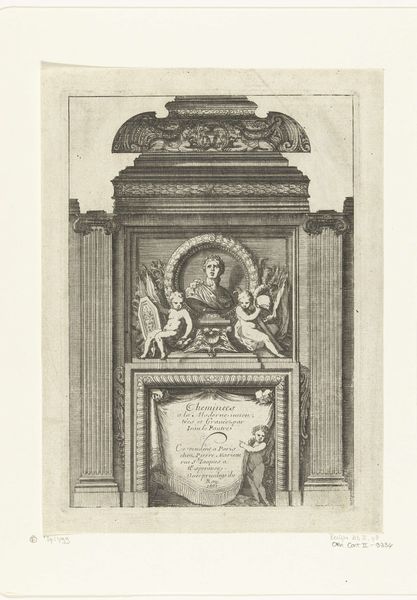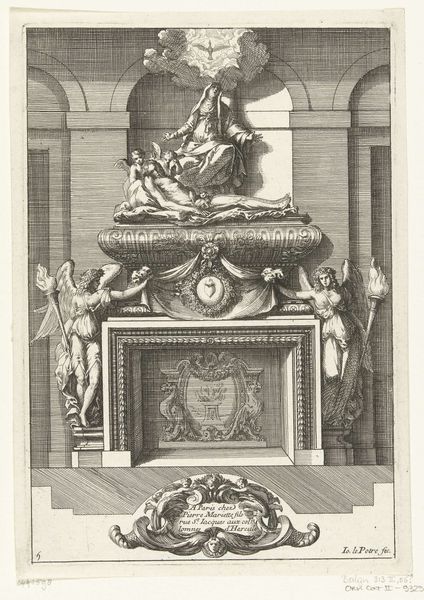
print, engraving
# print
#
figuration
#
orientalism
#
islamic-art
#
engraving
Dimensions: height 224 mm, width 270 mm
Copyright: Rijks Museum: Open Domain
Editor: This is "Beeld van boeddha Ixora vereerd in India," or "Statue of the Buddha Ixora worshipped in India," an engraving by Jan Lucas van der Beek, dating from between 1763 and 1818. The detail is really impressive; it feels very meticulous. What strikes you most about this print? Curator: What I find compelling is how this piece reflects the complexities of cultural exchange during that era. We have a Dutch artist depicting what he understands to be an Indian religious figure, but filtered through a lens of European aesthetics and colonial power dynamics. Notice how the figure is framed within what appears to be a European-style architectural setting, a church perhaps? What does that juxtaposition tell us about the artist’s intent, or perhaps, the patrons' expectations? Editor: That's a good point! It does look a lot like a church. It feels almost like the artist is trying to "contain" the figure within a Western framework. Was this a common way of representing non-Western subjects at the time? Curator: Absolutely. It's part of a broader phenomenon called Orientalism, where the "Orient" was often depicted as exotic, mysterious, and inherently different from the West. This print, while seemingly documenting Indian religious practices, also participates in constructing a specific, and often skewed, narrative about the "other." We have to question the power dynamics at play when images like these were created and circulated. How might the artist’s background influence the way we interpret this depiction of the Buddha? Editor: So, it's not just about what's being shown, but also *who* is showing it, and *why*. I guess it forces you to think about whose perspective we’re actually seeing. Curator: Precisely! It urges us to critically examine the historical and social context, questioning the narratives being presented and understanding how power operates within artistic representation. By deconstructing such images, we gain insights into the historical construction of identity and difference. Editor: That’s really fascinating. I’ll definitely look at similar artworks differently from now on.
Comments
No comments
Be the first to comment and join the conversation on the ultimate creative platform.
